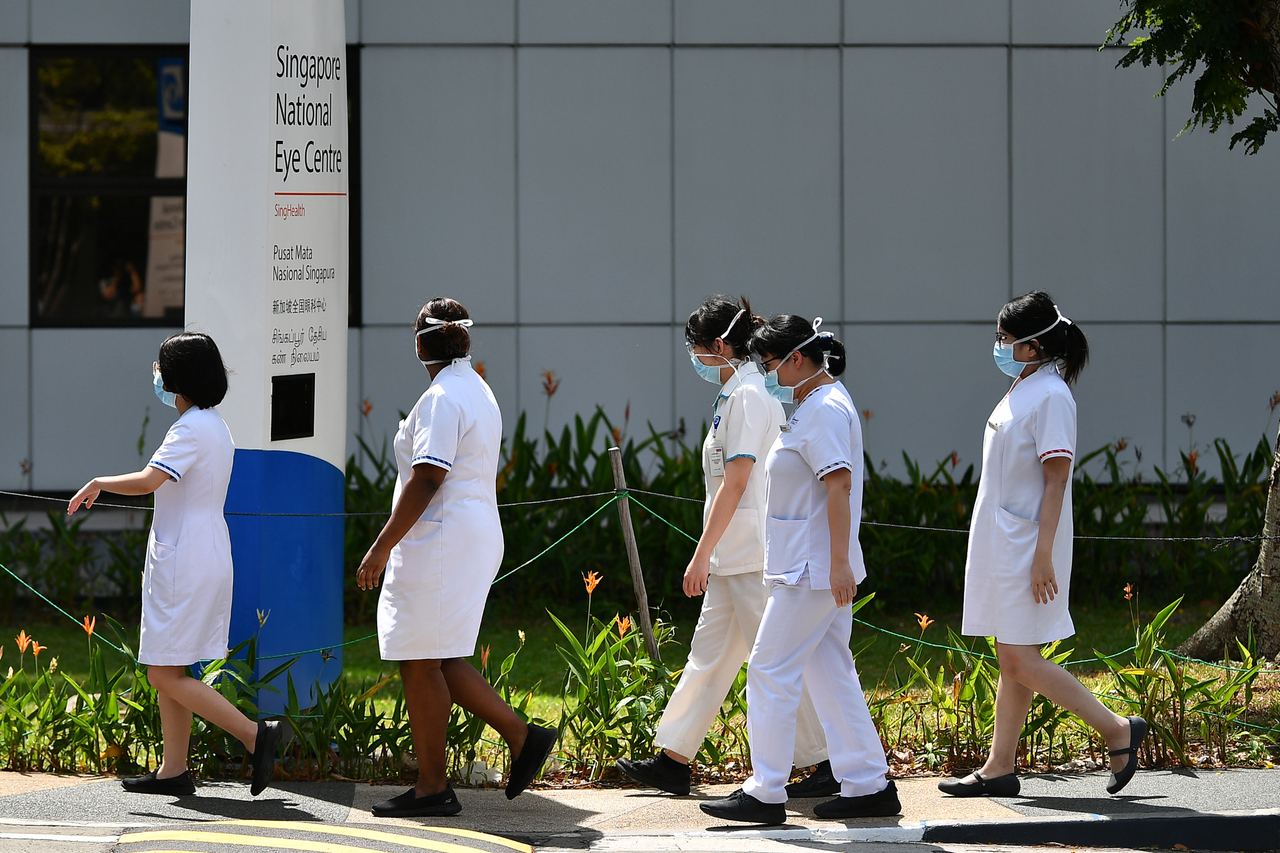Muslim nurses can wear tudung at work in most settings, but may not be allowed to do so if unsafe: MOH
Sign up now: Get ST's newsletters delivered to your inbox

MOH said that there are guidelines that will spell out a "risk-gradated approach" to the wearing of the tudung by nurses.
PHOTO: ST FILE
Follow topic:
SINGAPORE - Muslim nurses who choose to don the tudung at work from November can wear the headgear in most healthcare settings, but may not be allowed to do so where there is risk to their safety, such as when patients behave unpredictably.
The Ministry of Health (MOH) said on Tuesday (Aug 31) that there are also guidelines that will spell out a "risk-gradated approach" to the wearing of the tudung, which have been developed in consultation with various experts to ensure safety.
For most healthcare settings, it will be acceptable for staff to don a personal tudung that is tucked into the work attire to prevent the fabric from coming into contact with patients, said MOH, in response to queries from The Straits Times.
But in certain settings where infection control requirements are more stringent, such as operating theatres, a single-use disposable equivalent may be worn, the ministry added.
"In more specific areas or situations where there may be a high risk of patients' unpredictable behaviour such as pulling on the tudung in a way that would affect staff's safety, wearing the tudung may not be allowed for the safety of the healthcare worker," said MOH.
Prime Minister Lee Hsien Loong announced the Government's decision to allow the tudung to be worn by nurses in his National Day Rally speech on Sunday, which came on the back of years of consultation and consensus building among communities here.
MOH said after the PM's speech that the revised policy will apply to more than 7,000 staff, and the updated dress code will be based on guidelines developed by a steering committee and an advisory panel.
Extensive consultation was conducted from April to August this year with infectious diseases experts, nursing leaders as well as the Muslim community and union leaders.
There will be clinical and implementation guidelines for the tudung.
MOH said that the clinical guidelines were developed in consultation with infectious disease experts, and were based on reviewed literature and practices overseas. This is to ensure that sensitive medical procedures can be carried out safely.
"The clinical guidelines prescribe a risk-gradated approach to the wearing of the tudung based on the clinical setting," it said.
The implementation guidelines will provide clarity as to what colour of the tudung will be allowed, and how it should be worn to ensure that there is consistency in the appearance of uniformed staff.
MOH said that more details on these guidelines will be provided by public healthcare institutions here to their staff, but did not specify when these details will be given.

